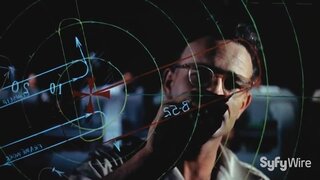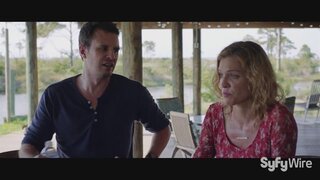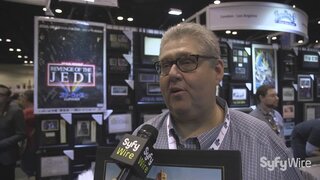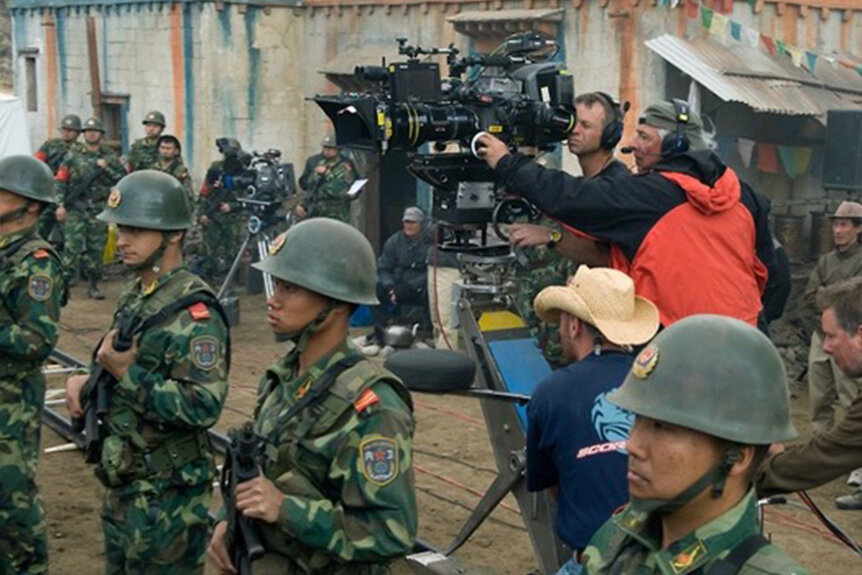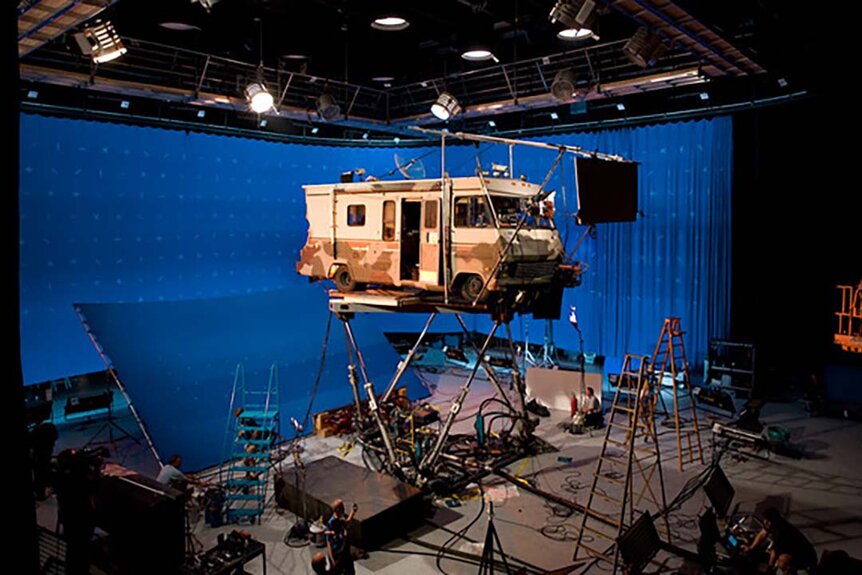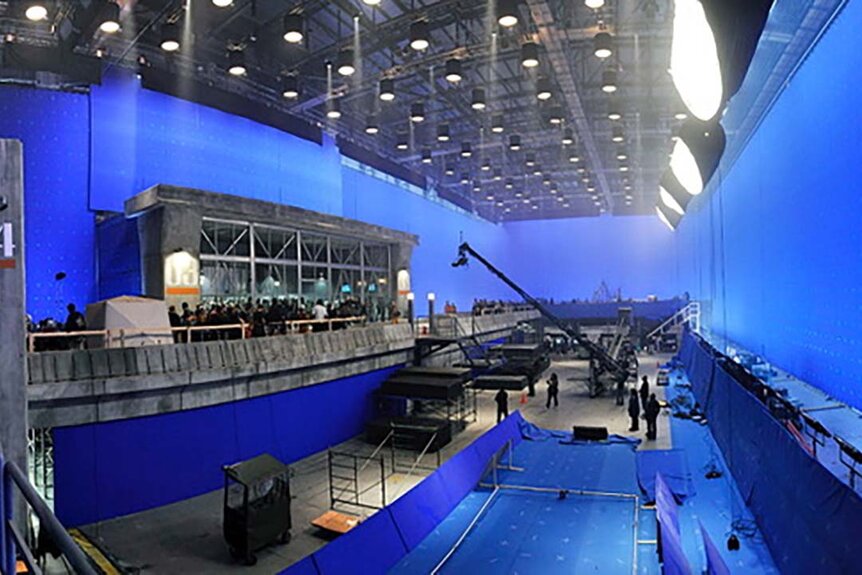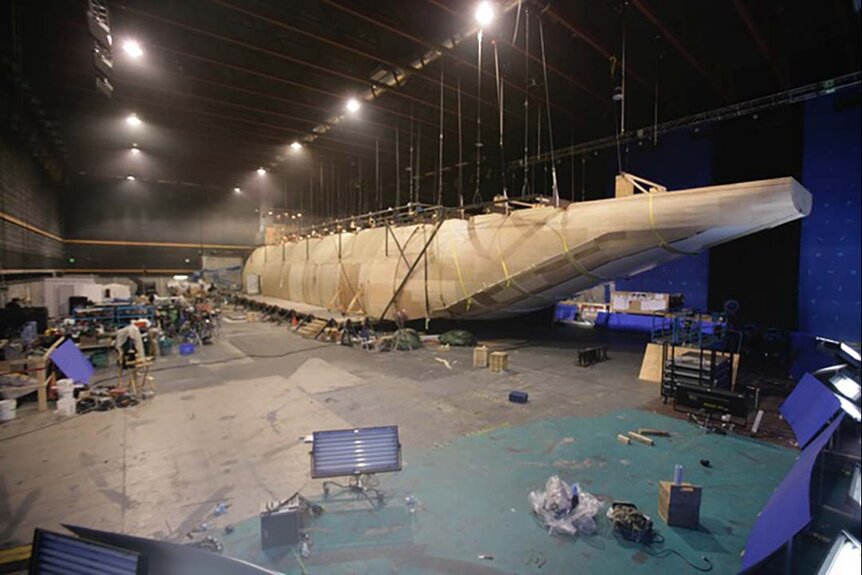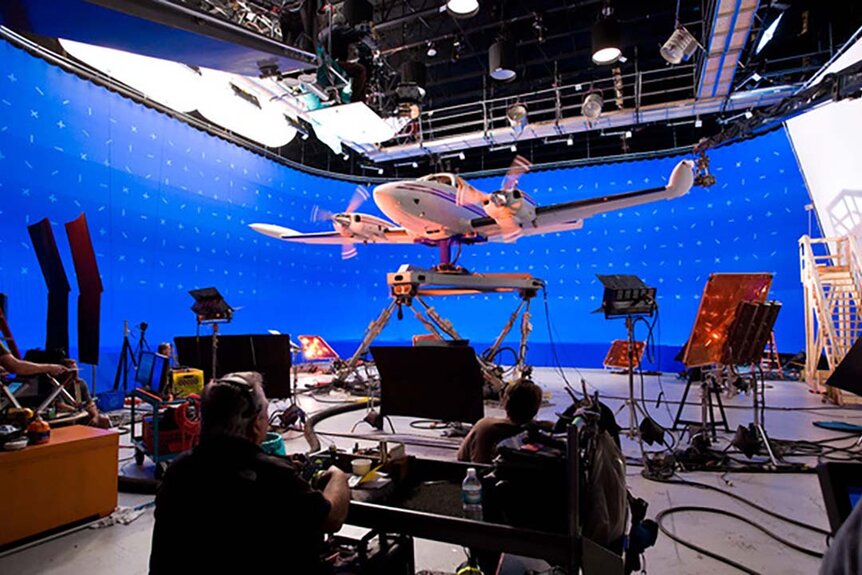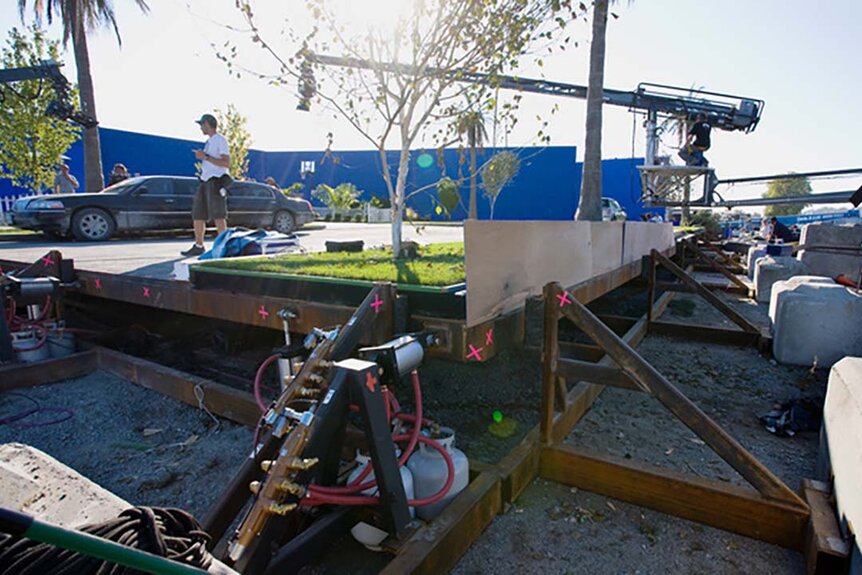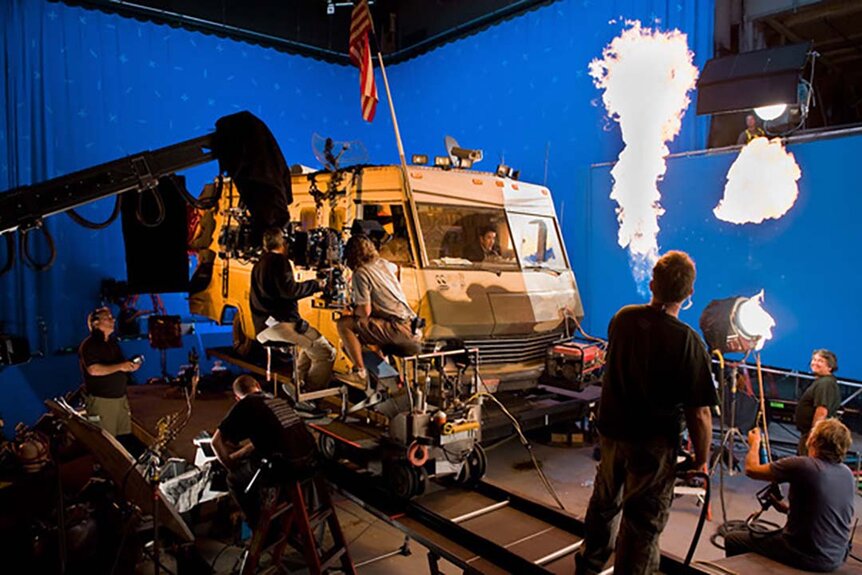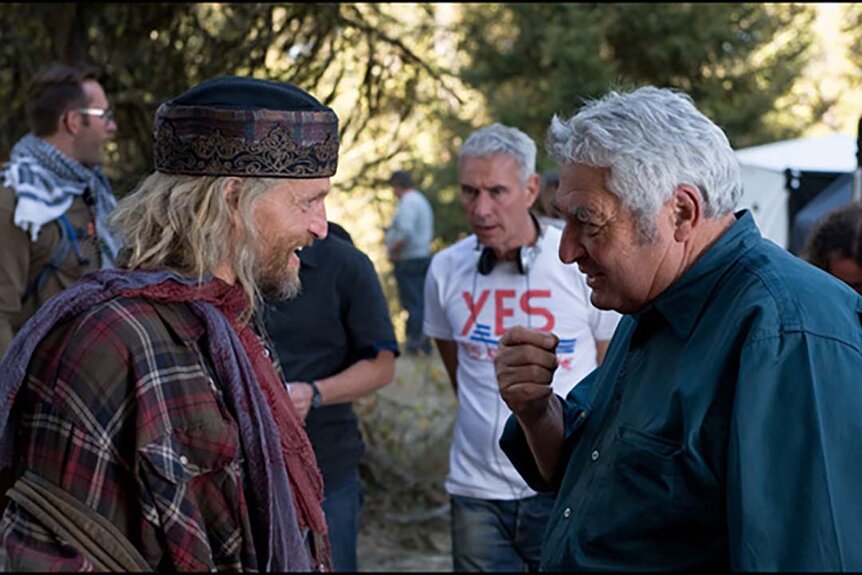Create a free profile to get unlimited access to exclusive videos, sweepstakes, and more!
Behind the Scenes of 2012, Roland Emmerich's Epic Sci-Fi Disaster Movie
No one does the end of the world like Roland Emmerich.
You'd think Dean Semler would have seen it all by the time director Roland Emmerich came knocking with an offer to shoot his next disaster movie. But even after several decades working as a cinematographer on major genre projects like The Road Warrior, Super Mario Bros., Last Action Hero, Waterworld, The Bone Collector, and xXx, the Australian director of photography still found himself gobsmacked by Hollywood's resident master of global destruction.
"It was magic to me," Semler tells SYFY WIRE while recalling the $200 million digital effects extravaganza that was 2012 (now available to stream on Peacock). "It was like this whole new illusion that I learned from. You sit back and watch the experts and learn from them."
How Roland Emmerich found his director of photography for 2012
Semler was asked to meet with Emmerich because the latter wanted to make the transition to digital. "I had done four or five films on the Genesis camera from Panavision, so I was sort of the so-called expert and he wanted to find out about it."
RELATED: Roland Emmerich's Peacock series 'Those About to Die' casts Anthony Hopkins as Roman emperor
The veteran cinematographer enumerated the upsides of the format to the director and his longtime writing/producing partner, Harold Kloser, and got the job. "Away we went," he says. "It was an extraordinary experience working with him. A lot was going on in his head I had no idea [of]. He had visuals that I couldn’t see."
What is Roland Emmerich's 2012 about?
In classic Emmerich fashion, 2012 explores a possible end of the world scenario through several interwoven story threads. Each narrative track provides a unique perspective on the situation — from an in-the-know government official to an average citizen off the street — and yields a rich apocalyptic tapestry nuanced with existential terror, deep moral quandaries, and an optimistic expression of humanity's desire to survive at all costs.
Similar to The Day After Tomorrow, 2012 forgoes creature-based threats (i.e. the alien invaders of Independence Day or the mutated iguanas of Godzilla) in favor of our own planet betraying us.
Drawing inspiration from the Mayan idea that the world would come to an end in December 2012 and Charles Hapgood's 1958 theory of earth crustal displacement, the film imagines a reality in which intense solar radiation destroys the Earth's core, leading to catastrophic earthquakes, volcanic eruptions, tsunamis, and shifting landmasses.
But if he was going to realize his largest vision of doomsday yet, destroying iconic monuments and cities with trademark abandon, Emmerich needed a large sandbox in which to play. "We took over some of the biggest stages — or most of the biggest stages — in Vancouver," Semler explains.
How did they film Roland Emmerich's 2012?
This allowed Emmerich, who did not want to be at the mercy of changing weather, to exercise a greater degree of control over the many backdrops the movie required. "He had most of the big sets built onstage and for God’s sake, we had a forest built on one stage with full-sized trees ... That was a wonderful achievement. The trees looked real and you wouldn’t know you weren’t outside."
The faux forest to which the DP refers is the patch of Yellowstone camping ground, where one of the film's protagonists, Jackson Curtis (John Cusack) meets the RV-dwelling conspiracy theorist Charlie (a memorably kooky Woody Harrelson).
"It’s the only time I was ever really criticized for lighting by a director in a bad way," Semler admits. "I’d lit the interior of Woody’s little Winnebago pretty much the way it was … Roland walked in and said, ‘This is f-cking boring light!' So I made a few changes in spots and he was right. It turned out for the better."
RELATED: Vivica A. Fox Thinks Independence Day: Resurgence "Missed Out" By Killing Off Will Smith's Character
The sheer amount of VFX work meant an extensive amount of blue screen, but the actors usually had something tangible on which to hang their performances. Sets were often rigged with hydraulics or built atop gimbals to simulate everything from violent earthquake tremors to the sudden banking of an airplane.
Of course, the largest production hurdle proved to be the climax, in which it is revealed that the world powers have constructed massive arks within the face of a Tibetan mountain to protect what is left of the human race from planetary flooding. This was a "mammoth undertaking," Semler says, necessitating an ungodly amount of lighting and hydraulics that required "30 or so generators working outside all the time 12 hours a day."
Thankfully, it all worked out in the end. "It was good to see the day’s work complete," he concludes. "Difficult scenes where you thought, ‘How the hell am I gonna do this?’ and you’d done it. Somehow you’d done it. You always got through."
Behind-the-scenes images from Roland Emmerich's 2012
2012 is now streaming on Peacock.
